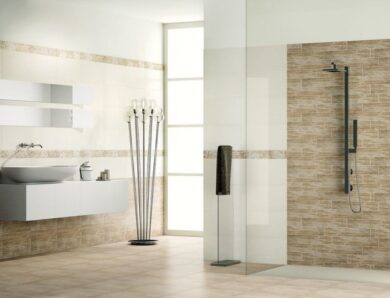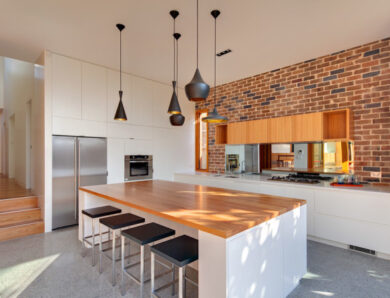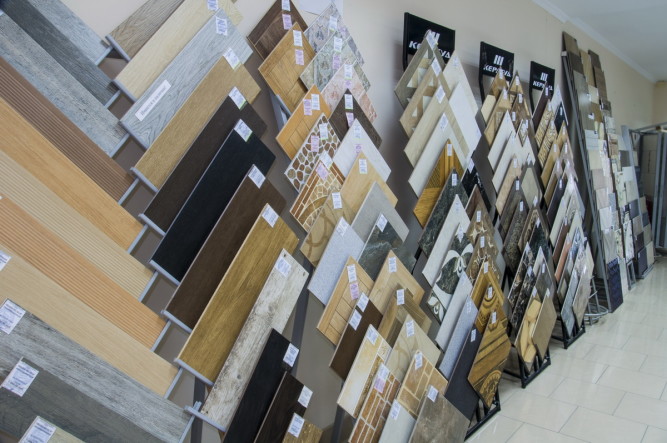How to put a tile on an uneven wall: specifics
The question of laying tiles on the uneven surface of the walls worries almost everyone, who is facing bathroom or kitchen renovations in their home. Inflows of concrete often remain on the walls, humps, depressions, also the cause of such defects is the chipping of the base material or the presence of old solution on the surface. Let's understand, what to do in this case.
Laying tiles requires prior preparation of the base
Methods of eliminating inequalities
All faults on the walls are removed before facing works. If for painting, gluing wallpaper such a task becomes the main one, tiles are laid without careful preparation. Of course, this will worsen the final result, but will save time and building materials.
Sometimes it is impossible to level the walls due to limited space, because drywall and plaster significantly "eat" space.
But also at this way of laying of a tile spend at least the minimum works on alignment of walls. Do this in one of the following ways:
- Plaster. Applied to problem areas. Additionally, treat the wall with a thin layer of mixture.
- Drywall. Used to remove serious depressions. The frame is not needed here, only a piece of material of the appropriate size is cut out and mounted on the wall. The edges are slightly flattened, and the joint is covered with plaster.
- Bulgarian. Used in the opposite problem - the removal of convex areas, with its help concrete inflows are removed. It is undesirable to touch fittings.
- Net. Pre-fastened with nails or screws to the wall. Fixes glue and tiles on problem areas.
Such methods, however, do not guarantee perfect alignment of the walls, but improve their condition and allow for better installation of tiles.
Ways to align the walls
Features of the used materials and subtleties of laying
First of all, when working with an uneven surface, the format of the tile itself is important. To make the differences minimally noticeable, the choice of a medium-sized tile will be optimal.
Regarding the adhesive solution, prefer plastic shopping mixes. Homemade sand composition crumbles, if you apply too thick a layer.
It is also recommended to use SVP. This device will facilitate the process of fitting adjacent elements, the glue will be distributed more or less evenly and the result will be a smooth surface without differences.
Consider the method of laying tiles on an unprepared uneven wall. First, walk on the surface level and mark the detected defects. Then minimize the differences found. Only then prime the walls and proceed directly to laying.
It is recommended to use medium format tile and SVP when facing an uneven surface
Apply glue as on the wall, and on the tile with a notched trowel. To level, tap the tile with a mallet and press with your hand. Control each step with a level. Once you find the defects you have 10 minutes on that, to remove it before the glue sets. Otherwise you will have to clean the solution and start all over again. The seams are fixed with crosses or wedges. Work in small lengths, so that the lower rows have time to dry and do not shift.
Possible consequences
If you lay the tiles on a completely unprepared uneven wall, further problems cannot be avoided. Of course, much depends on the degree of distortion, but in general the consequences can be divided into the following categories:
- Protruding corners. The most common problem. Due to level differences on the wall surface, namely inflows and pits, it is difficult to lay tiles. When fitting the corners protrude above the adjacent elements, on the one hand, and sink into the solution from the opposite. This is noticeable with oversized tiles.
- Wavy surface. It is also difficult to adjust the level for mosaics and small details, therefore on the facing plane there are wavy differences.
- Uneven joints. When fitting the tile, wide seams are formed between the elements, inflows are not excluded, which is even more undesirable. This defect can be partially eliminated with the help of grout.
- Weakening of the stickiness of the solution. With increasing layer of the adhesive composition, its properties deteriorate, the mixture slips or crumbles over time. In addition, this increases the cost of glue.
- The formation of voids. When applying a thick layer of solution to completely eliminate all depressions under it becomes more difficult, which leads to the weakening of the masonry.
- Destruction of a tile. If the tile is loaded with uneven surfaces, over time, it bursts under pressure.
When facing an unprepared plane, masonry defects are inevitable
To avoid such problems, it is recommended to perform at least minimal work on leveling the surface in advance. If the situation with the walls is not so critical, in the case of floor cladding unevenness is unacceptable.
If you make the walls perfect it is impossible, use the following methods. It is advisable not to abuse them, as in the future it will inevitably affect your repair.



